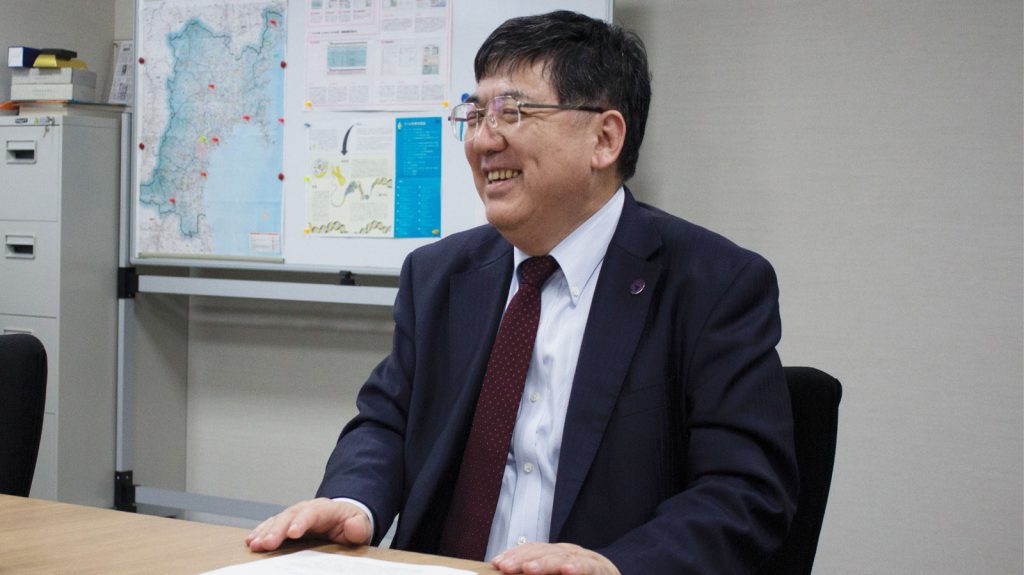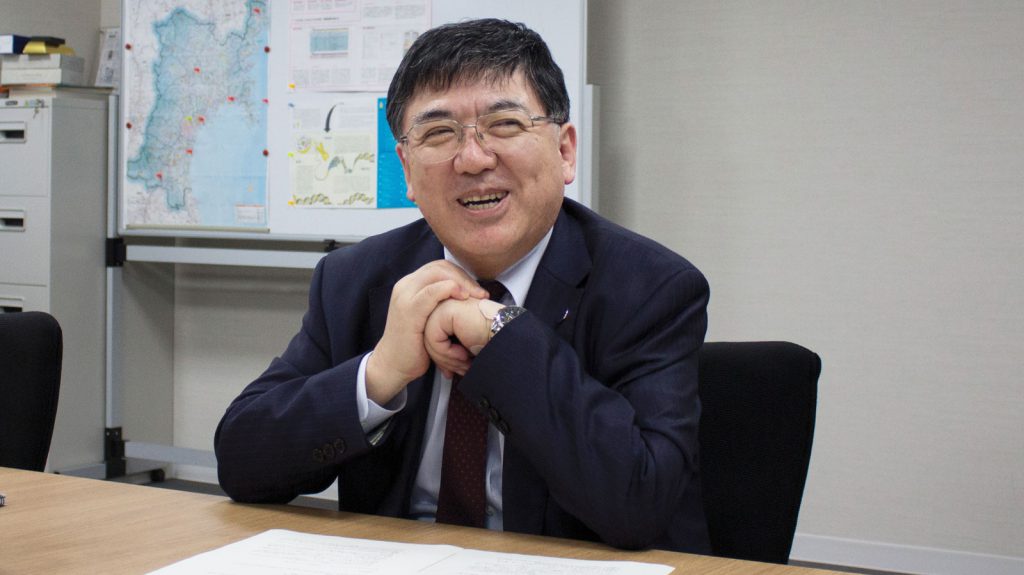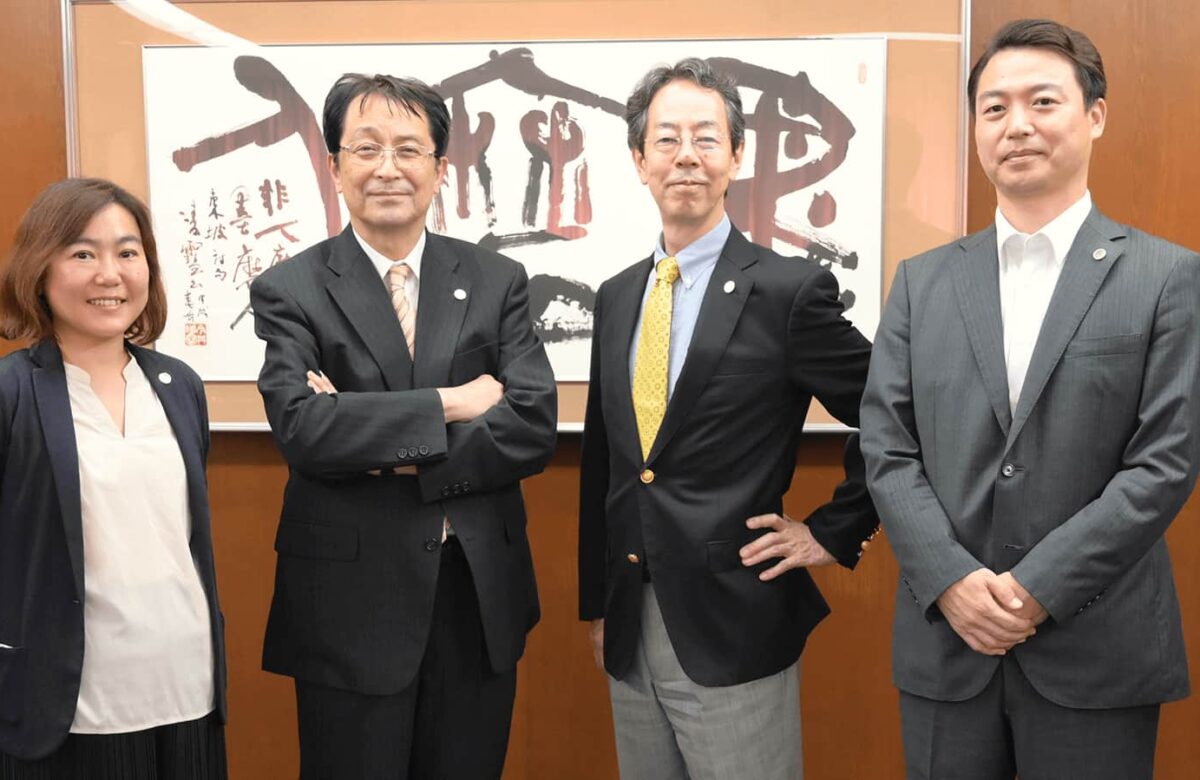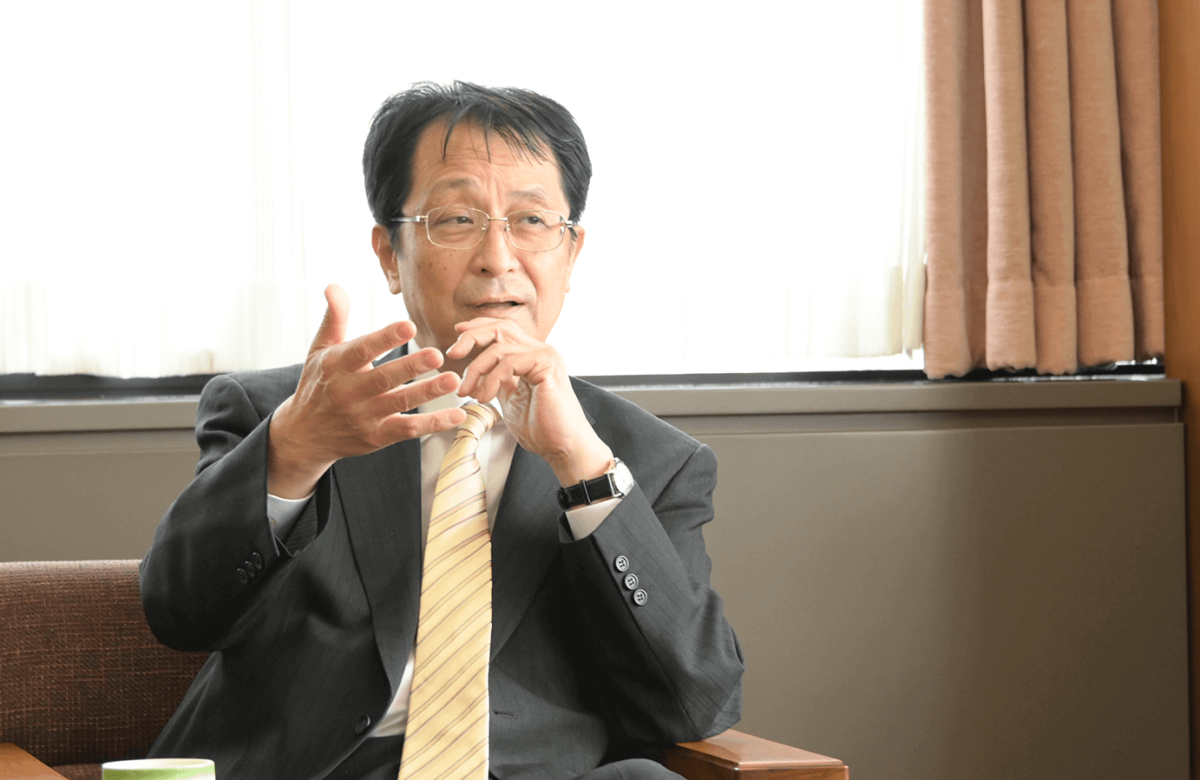Research Communications for the Tohoku Medical Megabank Organization
Masayuki Yamamoto explains the philosophy behind Tohoku Medical Megabank Organization's communications strategy
- UniversityArticleInterview
- May 1, 2017

The Tohoku Medical Megabank Organization was established to facilitate the recovery of the victims of the Great East Japan Earthquake. We tried to understand the management philosophy of the brains behind the successful research communications strategy, which led to a cohort study of 150,000 prefectural residents.
The Tohoku Medical Megabank Organization at Tohoku University was established in the wake of the Great East Japan Earthquake. What was the process leading up to its establishment?
It would take all night to answer that question, so I will just talk about how it all began. Within the first two weeks after the earthquake struck on March 3, we had run out of food, gasoline, water, and gas. Every day turned out to be a fight for survival. We had to make sure our people were safe and support the coastal areas. At the end of those two weeks, I realized that a recovery effort was necessary and I began to wonder what that “recovery” might look like. Recovery isn’t just about returning something broken to its original state, such as fixing a broken bookshelf. I felt that we needed to rebuild the devastated Tohoku University and the Tohoku region such that it would make them greater than before.
At the time of the earthquake, the current president of Tohoku University, Susumu Satomi, was serving as director of Tohoku University Hospital. He mandated that no patient referred to the hospital from any part of the prefecture, including the Pacific Coast regions, be refused. President Satomi announced that he wanted the university hospital to contribute as much as possible to the recovery efforts and be an integral part of the community by supporting medical efforts in afflicted areas. To this end, Director Yamamoto would need to explore new research opportunities to support recovery. This desire to create a research base in Tohoku and conduct cutting-edge research that could aid recovery was what led to the institution’s establishment.
When I was made dean of the School of Medicine in April 2008, the faculty functioned in an old-fashioned way, with the organization focusing mainly on so-called committees. In a certain sense, committees are representative of a static organization. This didn’t seem good enough to me, so I decided to restructure the basic operations of the faculty into “groups” where those assigned responsibility could do their jobs properly. The public relations group was one of the groups formed initially. We need to think about the objectives of a university when talking about university public relations. Japan’s national universities need to serve as windows through which information beneficial to the 21st century civilization can be transmitted worldwide. In some ways, public relations is one of the missions most central to a university.
Furthermore, one of the tasks of the Tohoku Medical Megabank Organization was to recruit 150,000 people to participate in a cohort study. Our goal was to enlist 120,000 participants from Miyagi Prefecture alone, but given that its population is around 2,400,000, we actually needed 5% of all prefectural residents and 40% of all pregnant women in the prefecture. How we communicated about the study to the community was a fundamental aspect of our project. Because of this, I thought we should make the most of all media available to us, and use public relations as a powerful management weapon.
What do you think is the most important thing when it comes to research communications?
The most important factor is its originality but you can’t just publish anything – it needs to have a clear direction. Building a consensus around that direction is one of the most important jobs of a leader, in my opinion. Listen to what PR experts have to say but always state your goals. Take responsibility and embrace your originality while conveying every point passionately. PR is as important – no, more important – than researchers in our organization. It is also important to make all members of the organization aware of this position.
Another thing to remember is that research communication must be a two-way conversation with the public. To achieve this, I made arrangements for integration within the organization. The “PR Department” was rechristened the “PR & Planning Department.” PR should be done by people who can be a bridge between the public and the university and come up with their own strategy (i.e. planning). Obviously, there are also top-down plans in which a PR strategy is considered for organizational projects. Another important job of PR specialists is to understand what the target demographic thinks and feels, and relay that information back to us. Because PR is a two-way approach, if we only engage in PR that considers the message we want to deliver from our end, then our plans will never go well. It is the job of a PR specialist to understand the needs and views of the target audience and convey the gathered information. In this organization, I believe that I can make such a challenging request and it will get done.

But universities are highly sectionalized institutions. Your organization might be working hard on PR, but is that the case with the entire Tohoku University?
That’s a good question! (laughs) Certainly, it’s not that just because one faculty, research institute, or university center is doing good PR, it will be easy for the entire university to do it well. But you know, universities are changing.
When Japanese national universities were privatized in 2004, the scientific journal Nature released a special issue on Japanese universities in Nature Outlook. The article claimed, “Once entangled in a spider’s web, Japanese universities are finally standing on the start line” [i.e. universities were finally becoming competitive]. I myself was interviewed for the piece, and the final article included a large photo of me grinning happily into the camera (laughs). It was around that time that I started thinking that, at last, Japanese universities would have no option but to change. In my opinion, one of the most important means to overcome the sectionalized culture of Japanese universities is through PR and planning. So, you could say that strengthening the PR and planning department is organizational management theory.
What does the future hold for research communications and Japan’s national universities?
If institutions are going to evolve under the principles of competition, then it is only right for PR to gain prominence. It’s the same for companies, right? The age where researchers would lock themselves up in their ivory towers and think exclusively about their “academia logic” is over. I believe we must create universities that have the public’s support and are viewed as worthy of investment. We can’t carry on forever with state funds. Thus, one of the important activities toward that end is interactive PR and planning.
In this case, I’m not talking about the use of jargon that nobody understands and waffling on about university autonomy or independence in academia. The words used by researchers do not reach the public. We have to learn from the public when they tell us that what researchers are doing isn’t understood or considered worthwhile by anyone outside of academic circles. We have to convince the public that it is worth investing taxpayers’ money on a university’s objectives or that their companies should invest in research because something valuable could result from it. I also disagree with researchers looking down on the public and companies, thinking that we are more important than them because we are working in academic fields. That is why the most important thing in science communication is for communication to be bilateral. It is important to convey findings to the public and use feedback from them in one’s research. In this regard, I think the social sciences are incredibly important because they are closer to the public and direct us to where the action happens.

What does the future look like for Tohoku University’s Tohoku Medical Megabank Organization?
The biobank we are building is public infrastructure, so to speak. It is important for it to be utilized and be helpful to those undertaking research or carrying out projects. It will take ten years to build the foundation. My hope is for the foundation to continue to be protected, cultivated, and used for the next 20 to 50 years. Because this will go on for so long, I’m ok if it is abandoned the moment people no longer find it useful. It is our job to cultivate it into something worthwhile, and I hope that if it is seen as something worthwhile then the public and companies will lend it their support. I hope they will help build it into something that can last for a long time.
In the lobby of the main building at Tohoku University’s School of Medicine, someone has written, “All I want to do is work and then die. Is changing yourself really this hard?” It has been there since I joined as a student and no one knows who wrote it. When I was a student, it was the second sentence that caught my imagination. Whenever I spent all night playing mahjong and arrived late for lectures the next morning, I would think, “I have to change!” (laughs). But more recently, I have had the sentence resonating with me. Work is something you do for others. Let’s assume the Tohoku Medical Megabank Organization carries on for 50 years. I will not be around, but the person who succeeds me will carefully look after the infants that are part of the cohort until they grow up. That is why I want to work hard as long as I am alive.
MASAYUKI YAMAMOTO
Masayuki Yamamoto is the Executive Director of Tohoku Medical Megabank Organization, Head of Genome Analysis, and Professor at Graduate School of Medicine (Medical Biochemistry). He graduated from Tohoku University School of Medicine and Graduate School of Medicine (obtained a master’s degree in 1983).
This article is a part of ScienceTalks Magazine issue The Tohoku Spirit: Endeavoring to Establish a Public Relations Team at the Tohoku Medical Megabank Organization.




